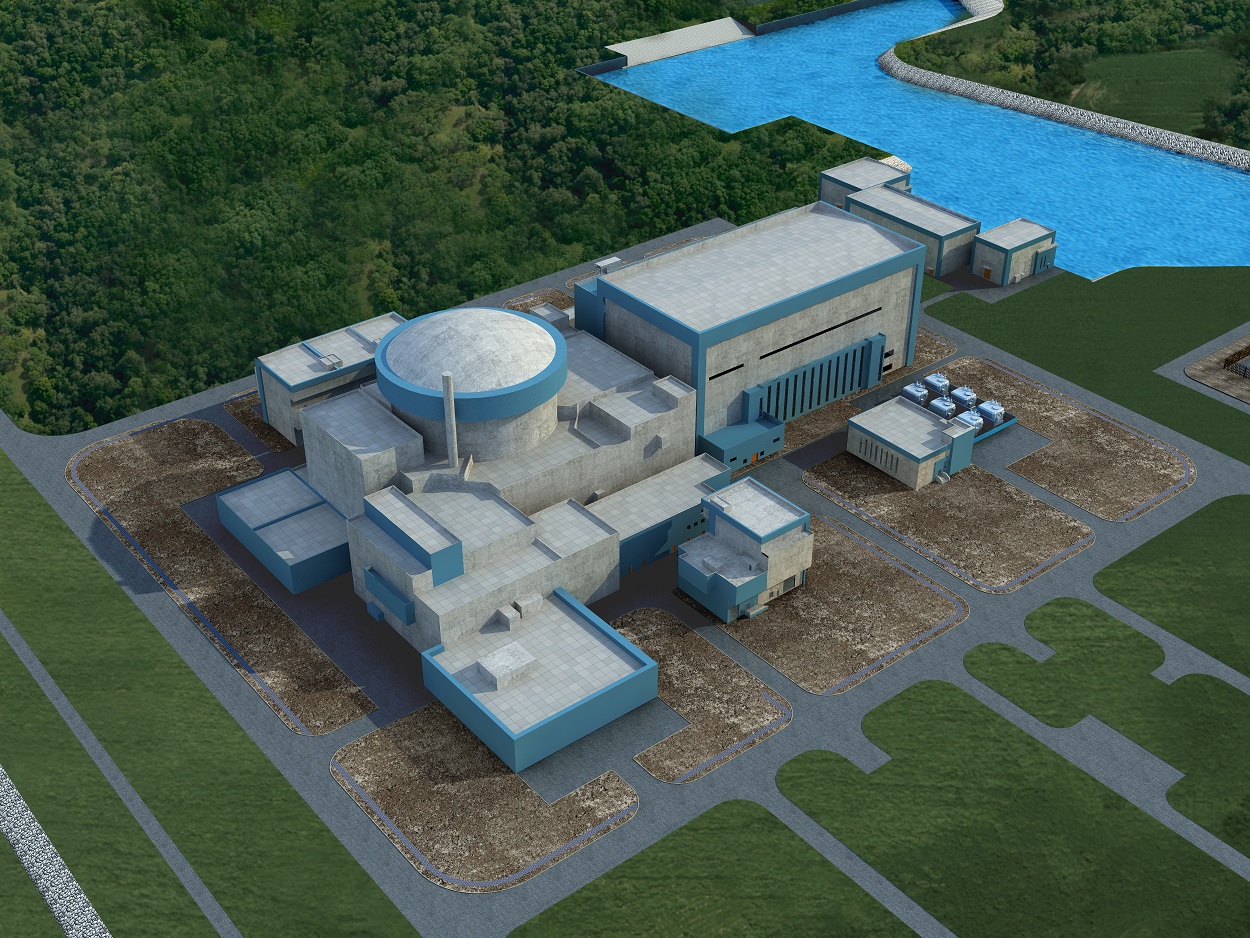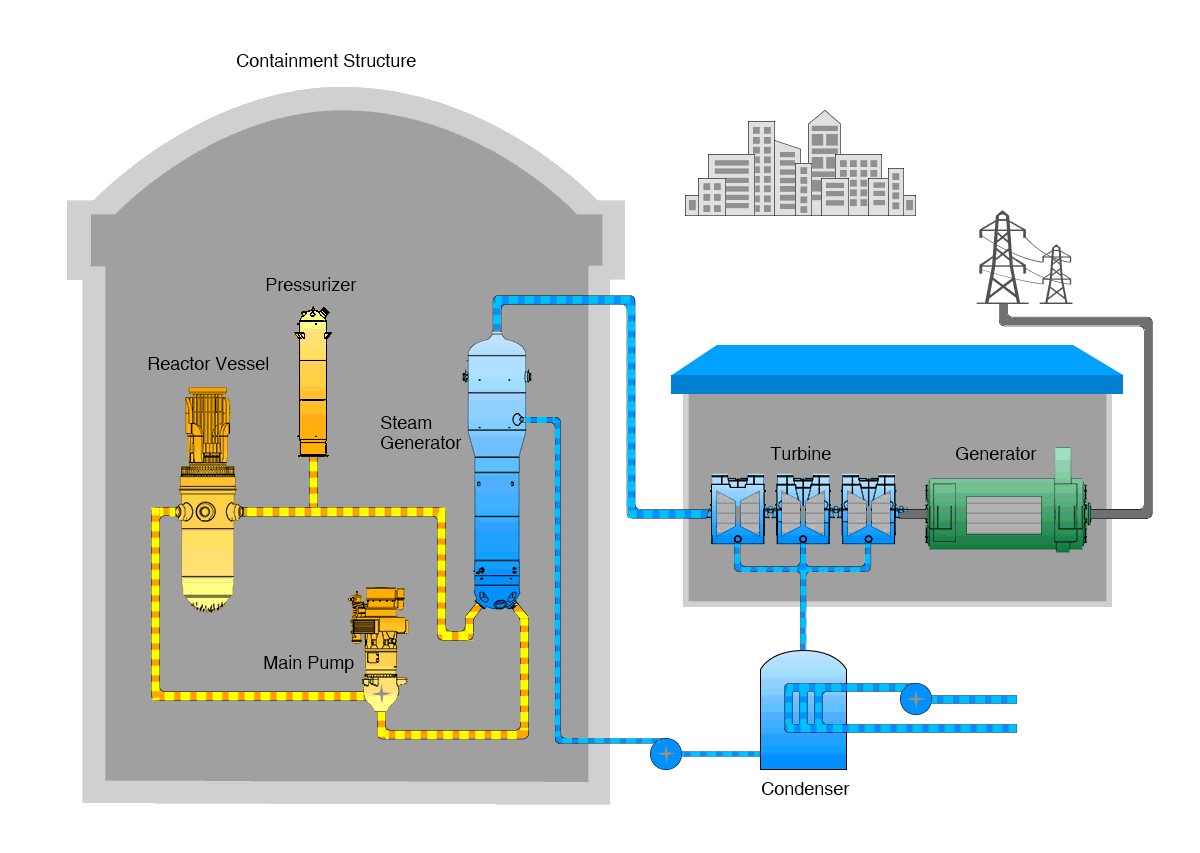Assessing new nuclear power station designs: Generic design assessment of General Nuclear System Limited UK Hualong pressurised water reactor (UK HPR1000)
Results updated 28 Feb 2023
Final decision (updated 7 February)
Thank you for taking part in our consultation. We are grateful to all who took the time to respond or contribute to our consultation events.
Generic design assessment of the UK HPR1000 began in January 2017. We started our technical assessment in November 2017. We completed our initial assessment and published our first report in November 2018. We then carried out our detailed assessment and ran a public consultation. We have now published our final decision.
We asked
We asked for views on our detailed assessment of environmental aspects of the UK HPR1000 new nuclear power station design for 12 weeks between 11 January and 4 April 2021.
Our public consultation was open to everyone including the public, the energy industry, academics with an interest in nuclear power, energy or the environment, NGOs and other public bodies.
Our consultation document set out 6 GDA potential issues and 45 assessment findings.
- A GDA Issue is an unresolved issue that is significant, but resolvable, and which needs resolving before construction of the reactor starts.
- An assessment finding is an unresolved issue that is not considered critical to the decision to start construction - it will need to be addressed during the design, procurement, construction or commissioning phase of any new build project.
We provided detailed explanations of the issues and assessment findings in the document and reports.
You said
The program for this GDA meant that the final decision was not expected until at least 10 months after the end of consultation. To enable all interested parties to see the range of matters raised we published all 52 responses, as received, in July 2021. Link here .
Responses covered the GDA process, GDA scope and the consultation process. Many respondents raised specific technical points related to our preliminary assessment reports. The responses are summarised and addressed in appendix 7 of the decision document. This can be found here.
A number of responses raised matters outside the scope of GDA and sometimes outside our regulatory remit.
We have explained why we are not considering them in our GDA. Examples include site-specific concerns, government policy or other government facilitative actions, matters associated with planning and matters associated with the development of a geological disposal facility (GDF).
In addition to our consultation we also ask all nuclear power station design companies who enter the GDA process to set up a website and publish information about its design, invite comments and questions about the design, and respond to those comments and questions. Our public comments process closed on 17 September 2021. The company received and responded to 73 comments. We saw the questions and the company’s responses and used them, where relevant, to help inform our assessments. Information about this process has been published and can be found here.
We did
We carefully considered all the responses we received to our consultation and reflected on the comments made during our engagement events.
Our conclusions are based on:
- the final versions of the GDA submission (submitted October 2021)
- technical discussions held with the reactor design company
- consideration of the responses to our consultation
- consideration of comments submitted to the 'GDA comments process' website and the responses provided by the reactor designer
Our decision is based on our detailed environmental assessment reports. We are publishing updated versions of these alongside our decision document. These cover 8 different topics:
- Management systems
- Strategic radioactive waste management arrangements
- Best available techniques
- Gaseous and aqueous waste
- Solid waste, spent fuel and disposability
- Sampling and monitoring
- The generic site and radiological impact on people and wildlife
- Other environmental regulations
At consultation we highlighted 6 potential GDA Issues. The reactor design company has since submitted the additional information required and these have been closed. There are now no unresolved GDA Issues.
We also identified 45 Assessment Findings. We will expect a future operator to address these at the appropriate stage in the life cycle of the power station.
Subject to the Assessment Findings, the UK HPR1000 design would be acceptable for permitting at any coastal site consistent with the generic site as defined by the reactor designer. The characteristics of this generic site envelop the sites included in the national nuclear policy statement NPS EN-6, but detailed assessments specific for any proposed site would be required as part of application.
We do not believe that any of the Assessment Findings are so fundamental that they are unlikely to be resolved satisfactorily before or during site-specific permitting.
We have also considered whether the additional information received since our consultation has significantly changed the basis of our consultation. We believe that there have been no changes to the design or submissions that would impact on the information presented at consultation.
Our overall conclusion is that we can issue a statement of design acceptability (SoDA) for the UK HPR1000. This is valid only for a site meeting the identified generic site characteristics and subject to any future determination of a site-specific permit application. This statement does not guarantee that any site-specific applications for environmental permits for the UK HPR1000 will be successful.
Read the decision document which includes how we have addressed your responses - https://assets.publishing.service.gov.uk/government/uploads/system/uploads/attachment_data/file/1048627/Generic_design_assessment_of_the_UK_HPR1000_design_-_decision_document.pdf
Read the public summary - Generic design assessment of the UK HPR1000 design - decision document summary - GOV.UK (www.gov.uk)
Read the revised final assessment reports here - GDA decision and SoDA: UK HPR1000 reactor - GOV.UK (www.gov.uk)
Please see our consultation response document for a full summary of your responses on GOV.UK.
Next Steps
Any company that wants to build and operate a new nuclear power station must obtain a number of important site-specific permissions from regulators. If we receive permit applications, we will decide whether permits should be granted and, if so, what conditions should apply. When making decisions about site-specific permit applications, we will take account of the work done during this GDA. We will also carry out further public consultation before deciding whether to issue operational permits for a specific site.
If you have any questions about these documents please contact us by email nuclear@environment-agency.gov.uk
Files:
- Stakeholder responses to consultation on Generic Design Assessment of UKHPR1000, 1.0 MB (PDF document)
- Questions and answers given during Generic Design Assessment consultation events, 826.4 KB (PDF document)
Overview
The government is responsible for the UK's energy policy and its current position is set out in the December 2020 white paper, "Powering our Net Zero Future". In the white paper, the government highlights the need to address climate change urgently and it sets out the strategy for wider energy systems to achieve the UK's target of net zero emissions by 2050.
New nuclear power stations are an important part of the government’s strategy to help ensure that we have secure supplies of low carbon electricity in the future.
At the Environment Agency , we have published our own plan, ‘EA2025 creating a better place’, to guide our activities. This plan will act as our compass, enabling us and others to chart a course towards a healthier, greener and more prosperous country in 2025.
Our EA2025 plan sets out 3 main goals:
- a nation resilient to climate change
- healthy air, land and water
- green growth and a sustainable future
Our regulation of nuclear sites aligns with these goals because it helps ensure that these facilities are designed and operated in ways which minimise waste and protect the environment.
As both regulators of the nuclear industry, we and the Office for Nuclear Regulation (ONR) work togther to ensure that any new nuclear power stations built in the UK meet high standards of safety, security, environmental protection and waste management.
We scrutinise new nuclear power station designs thoroughly, making sure people and the environment are properly protected.
General Nuclear System Ltd (GNSL), is a UK company that is owned jointly by China General Nuclear (CGN) and Electrictie de France (EDF). Both companies are major providers of nuclear technologies, in China and France respectively. CGN has developed and is constructing new nuclear power stations in China using Hualong reactors. The UK HPR1000 power station is based on the Hualong design and has been submitted to the UK nuclear regulators for Generic Design Assessment (GDA). GNSL’s role is to act on behalf of the Requesting Parties (RP), the organisations submitting their reactor designs for this generic design assessment, working directly with the regulators.

An example 3D model of the UK HPR1000 - Image copyright of China General Nuclear
The GDA allows us to begin scrutinising new nuclear power station designs well in advance of construction starting. This means that we can identify any potential design issues at an early stage and ask the reactor design company to address them. This will help to avoid potential costly and time consuming changes when the reactor is being built.
We are asking for your views on our assessment of the UK Hualong pressurised water reactor UK HPR1000 nuclear power station design.
Read our documents – Please see full list of documents below. These can be found in the 'related documents' section at the bottom of the page.
Our preliminary conclusions and supporting reasoning are available in our full consultation document and we welcome your views.
We are also publishing 8 preliminary assessment reports, an independent dose assessment and a short plain English public summary to help inform the consultation, see below for full list of documents.
- Questions raised and answers given during GDA consultation events. FINAL - This document is a record / transcript of questions and answers from online consultation events held during February and March.
- Consultation summary document - please click here to view HTML link.
- UK HPR1000 consultation document
- AR01 - Preliminary detailed assessment of management systems
- AR02 - Preliminary detailed assessment of strategic considerations for radioactive waste management
- AR03 - Preliminary detailed assessment of best available techniques (BAT)
- AR04 - Preliminary detailed assessment of gaseous and liquid discharges of radioactive waste
- AR05 - Preliminary detailed assessment of solid radioactive waste, spent fuel and disposability
- AR06 - Preliminary detailed assessment of sampling and monitoring
- AR07 - Preliminary detailed assessment of the generic site description and the assessment of doses to the public and to wildlife
- AR08 - Preliminary detailed assessment of other environmental regulations
- Independent dose assessment to support the Environment Agency's assessment of General Nuclear System Limited's UK HPR1000
- Generic design assessment leaflet 2021 FINAL
- GDA UK HPR1000 consultation briefing note FINAL
Online events for the public and local groups
We’ve organised some online events where we will share our findings and you can ask questions.
The events are on Zoom (dial in option also available). You'll receive an email booking confirmation as soon as you book. Closer to the event we will email you with an agenda, detailed joining instructions and the presentations.
23 February 5:30 PM - 7:30 PM – Book here https://www.trybooking.co.uk/XLG
25 February 5:30 PM - 7:30 PM – Book here https://www.trybooking.co.uk/XLH
Why your views matter
We want to hear your views on our preliminary conclusions following our detailed assessment of environmental aspects of the UK HPR1000 new nuclear power station design.

A simplified diagram of the internal workings of the UK HPR1000 - Image copyright of China General Nuclear
Our consultation does not relate to a specific site. However, the Bradwell Power Generation Company Limited is developing proposals for 2 UK HPR1000s to be constructed at the Bradwell site in Essex, adjacent to the existing Magnox power station. The GDA does not mean that Bradwell Power Generation Company Limited can proceed to construction at the site as the company must still secure all relevant permissions for the site before this could begin.
We would emphasise that this consultation is not about the need for nuclear power, UK energy policy, policy relating to the siting of nuclear power stations, or the safety and security of the design.
We can all help to protect and improve the environment by being actively involved. We have deliberately made the GDA process open, transparent and consultative and we would like people to understand our role, what we are doing and why it's important.
This is a public consultation and we welcome everyone’s views. We want to hear from the public, the energy industry, academics interested in nuclear power, energy or the environment, non-governmental organisations and any other organisation or public body.
We would like to find out your views on our preliminary conclusions following our detailed assessment of the environmental aspects of the UK HPR1000 nuclear power station design.
What happens next
|
By May 2021, we expect to publish a document containing your responses to the GDA consultation for the UK HPR1000 on this consultation’s web page and GOV.UK. We will carefully consider all the responses to the consultation and complete our detailed assessment. Then we will make our decision on whether or not to issue a statement, or interim statement, of design acceptability for the UK HPR1000. Together with the ONR, we will carry out the GDA and coordinate our decision making. We will summarise the responses to our consultation, issues raised and our views on those issues. We are aiming to publish our final conclusions in our 'decision document' in early 2022. Future opportunities to have your say There will be further consultation on any environmental permit applications for the operation of this design on specific sites. You can read our publication participation document here: https://www.gov.uk/government/publications/environmental-permits-when-and-how-we-consult. |
Audiences
- Academics
- The nuclear industry
- Members of the public
- Non-governmental organisations with an interest in environmental issues
Interests
- Business and industry
- Waste
- Permits
- Nuclear
- Environmental permitting

Share
Share on Twitter Share on Facebook